Transitional interior design combines the best of both worlds. Modern furniture is often mixed with vintage or traditional decor. For instance, pairing a sleek sofa with a rustic wooden table creates a blend of styles that feels fresh but familiar.
Main Features of Transitional Design
- Neutral Shades: Colors like soft gray, beige, and white keep the space calm and relaxed.
- Simple Shapes: Furniture is sleek and straightforward, giving rooms a clean and open feel.
- Fewer Decorations: Instead of decorating a room, choose a few eye-catching pieces to create focus.
Combining Modern and Classic Elements
- Mix and Match: Use modern furniture and traditional pieces, like a smooth table with an old-style chair.
- Less is More: Focus on a few pieces of furniture to avoid a cluttered look.
- Balance is Key: Arrange your furniture so the room feels balanced, like placing matching lamps or chairs on either side of a sofa.
Choosing the Right Colors for Transitional Spaces
Neutral colors are key in transitional spaces. Here are the best ones to use:
- Soft Whites and Grays: These create a bright, airy feel, perfect for walls.
- Warm Beiges and Taupes: Great for furniture and textiles, adding warmth.
- Pops of Color: Add small splashes of soft blues, greens, or blush pinks through pillows or rugs to keep the space interesting.
Sticking to neutrals helps create a calm, balanced look.
Adding Texture to Transitional Interiors
Adding texture brings depth to a neutral space. Here’s how:
- Layered Fabrics: Use blankets, pillows, and rugs to make the room cozy.
- Natural Materials: Wood, stone, and metal add interest. A wooden table or stone fireplace is perfect.
- Textured Finishes: Pair smooth and rough textures, like a glossy table with a fabric sofa, to keep the space dynamic.
Mixing textures adds warmth and makes a neutral room feel inviting.
Best Furniture Choices for Transitional Interiors
When choosing furniture, look for:
- Clean Lines: Simple, sleek furniture that fits both modern and traditional styles.
- Timeless Pieces: Furniture that won’t go out of style, like a classic sofa or sturdy wooden table.
- Comfortable Seating: Opt for plush sofas and chairs for both style and comfort.
The right furniture combines elegance with comfort, making your space both stylish and welcoming.
Transitional Design for Small Spaces
Transitional design works well in small spaces because of its simplicity and balance. Here’s how to make it work:
- Use Light Colors: Light colors, like soft grays or whites, can make a small room feel bigger. Stick to a neutral palette to create a bright and open space.
- Choose Functional Furniture: In small spaces, furniture should be functional as well as stylish. Look for pieces that serve more than one purpose, like a coffee table with storage or a sofa that doubles as a bed.
- Keep It Uncluttered: In a small space, less is more. Stick to a few key pieces of furniture and decor, and avoid overcrowding the room.
Affordable Transitional Interior Design Ideas
Here are some affordable ways to decorate:
- Thrifted Furniture: Look for second-hand furniture that you can update with a fresh coat of paint or new upholstery. Mixing old and new is a key part of transitional design, so don’t be afraid to get creative.
- DIY Projects: Create your own decor with DIY projects. For example, you could make your own wall art, refurbish an old piece of furniture, or sew your own throw pillows.
- Budget-Friendly Accessories: Accessories like rugs, pillows, and curtains can be found at affordable prices. Look for simple, neutral designs that will complement your space.
With a little creativity, you can achieve a transitional look without breaking the bank.
How to Accessorize Transitional Interiors
Here are some tips for choosing the right accessories:
- Minimal Decor: Choose a few key accessories, like a vase, a piece of art, or a mirror, and keep the rest of the room simple.
- Statement Pieces: Look for one or two statement pieces that can serve as focal points. For example, a large piece of art or a bold light fixture can add character to the room.
- Balanced Accessories: Make sure your accessories are balanced with the rest of the room. If you have modern furniture, choose more traditional accessories, and vice versa.
Difference Between Transitional and Contemporary Design
Though similar, transitional and contemporary designs differ:
- Softer Lines: Transitional design has softer, curved lines, while contemporary is more angular.
- Timeless vs. Trendy: Transitional focuses on timeless pieces; contemporary follows trends.
- Modern and Classic Mix: Transitional blends modern and traditional, while contemporary stays modern.
Choose the style that fits your taste and home.
20 Best Transitional Interior Design Ideas of 2025
Here are the 20 best transitional design ideas to inspire you this year:
- Neutral Color Palettes
Stick with soft whites, grays, and taupe to create a calm and inviting space. Neutral tones are key in transitional interiors for a timeless look.
- Statement Light Fixtures
A bold chandelier or oversized pendant light adds a modern touch to a classic room. These statement pieces can become the focal point in living rooms or dining areas.
- Mixing Metal Finishes
Incorporate a blend of metal finishes like brass, gold, and matte black. Mixing metals creates depth and a dynamic contrast in kitchens or bathrooms.
- Layered Textures
Combine different fabrics such as linen, velvet, and cotton to bring warmth and softness to any room.
- Classic Patterns with Modern Twist
Use traditional patterns like stripes or damask on modern furniture pieces.
- Minimalist Artwork
Choose large, simple art pieces with neutral or muted tones. Clean-lined artwork complements the balance of old and new in transitional design.
- Comfort-First Seating
Prioritize comfort by choosing plush sofas and cushioned armchairs.
- Statement Mirrors
Oversized mirrors with sleek or ornate frames enhance both light and space.
- Mixing Old and New Furniture
Combine sleek modern furniture with vintage or antique pieces.
- Wood and Metal Combinations
Pair natural wood finishes with metal accents, such as a wooden dining table with metal chairs.
- Sleek Storage Solutions
Use simple, streamlined storage solutions like built-in cabinets or floating shelves.
- Open Concept Layouts
Open layouts that connect living, dining, and kitchen areas are perfect for transitional homes.
- Accent Chairs with Traditional Designs
Choose accent chairs that have classic designs but are re-upholstered in modern fabrics.
- Natural Stone Features
Incorporate stone, such as marble countertops or stone accent walls, to bring texture and elegance to kitchens and bathrooms.
- Classic Trim and Molding
Add crown molding or wainscoting to bring architectural interest to your walls.
- Glass and Metal Coffee Tables
Opt for a glass top coffee table with a metal frame to add a touch of modernity without overpowering the room.
- Neutral Area Rugs
Use neutral-toned area rugs to define spaces and add warmth without distracting from the overall design. Choose subtle patterns or textures for extra depth.
- Dark Accents for Contrast
Balance light and airy spaces with dark accents like black picture frames, dark cabinetry, or bold light fixtures.
- Modern Fireplaces
Install a sleek, minimalist fireplace in your living room. A modern fireplace design creates a focal point while keeping the room balanced between modern and classic.
- Simple Window Treatments
Choose simple, elegant drapes or blinds in neutral tones. Avoid heavy or overly ornate treatments to keep the room light and airy.
These ideas for transitional interior design in 2024 can help you create a stylish, timeless space.

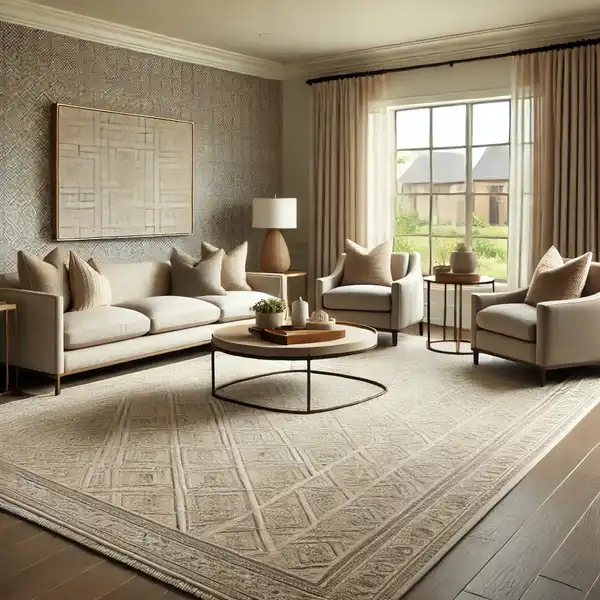
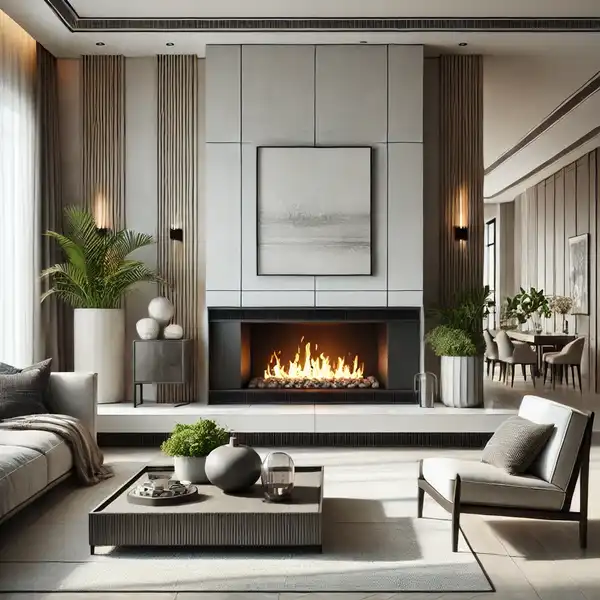
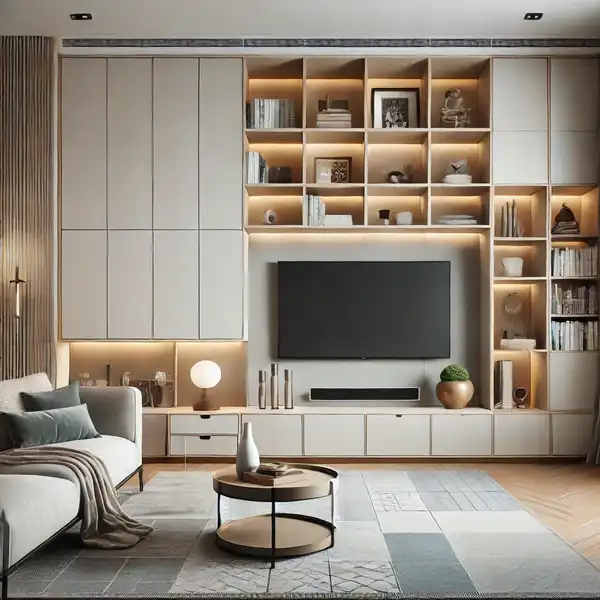
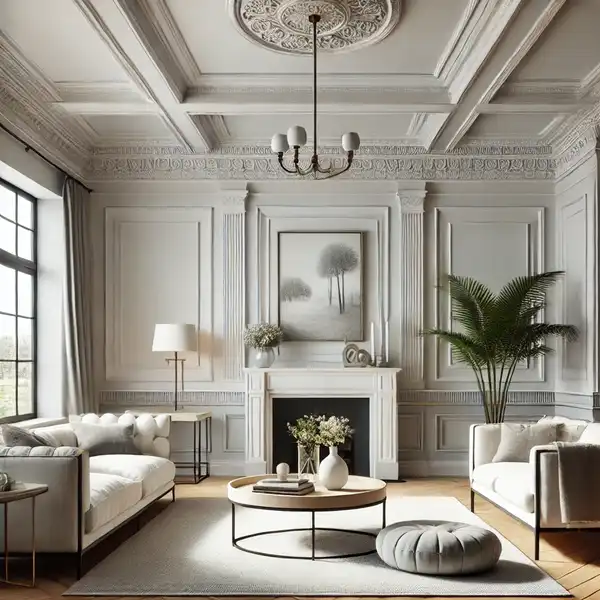
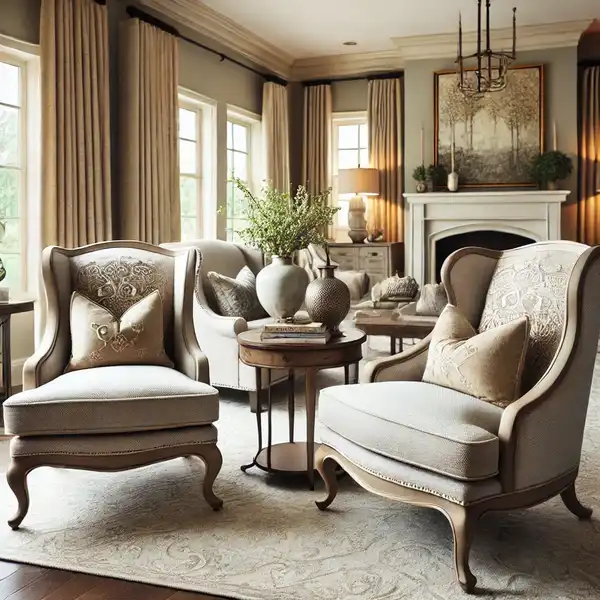
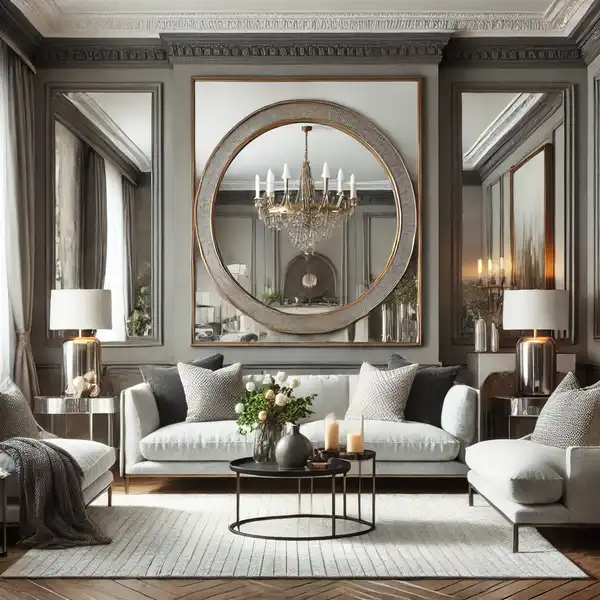
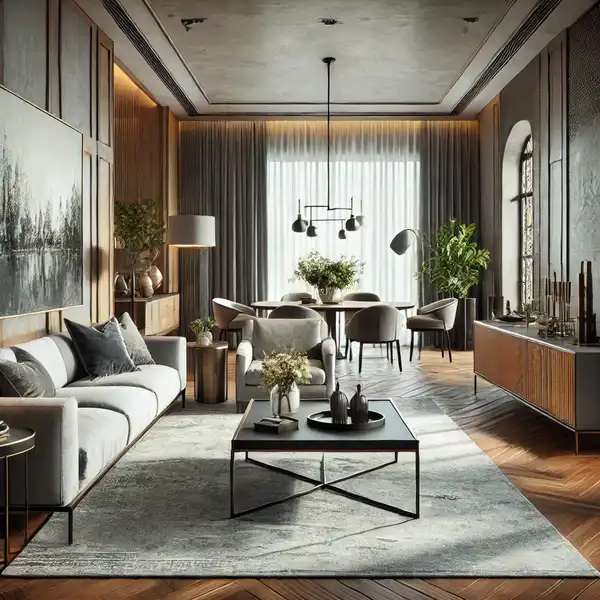
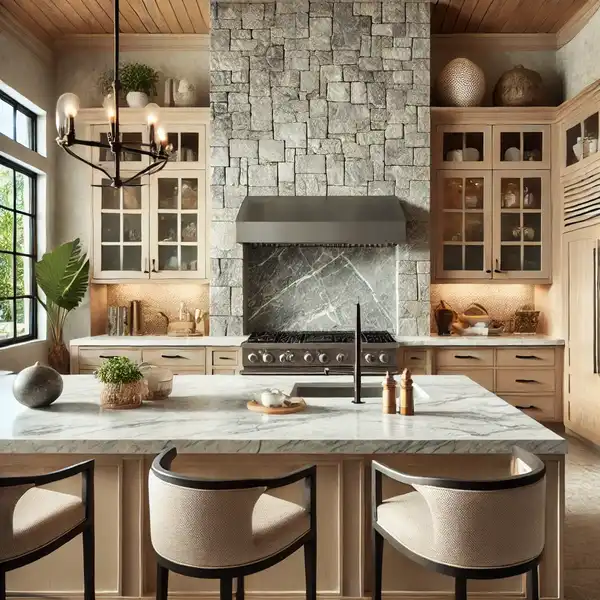
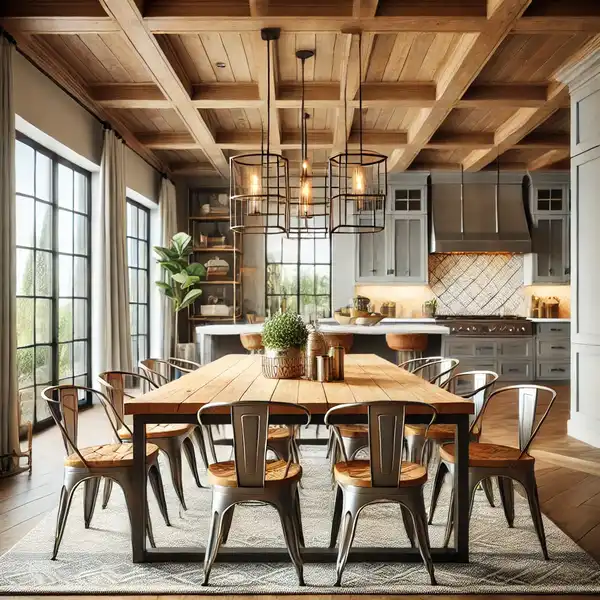
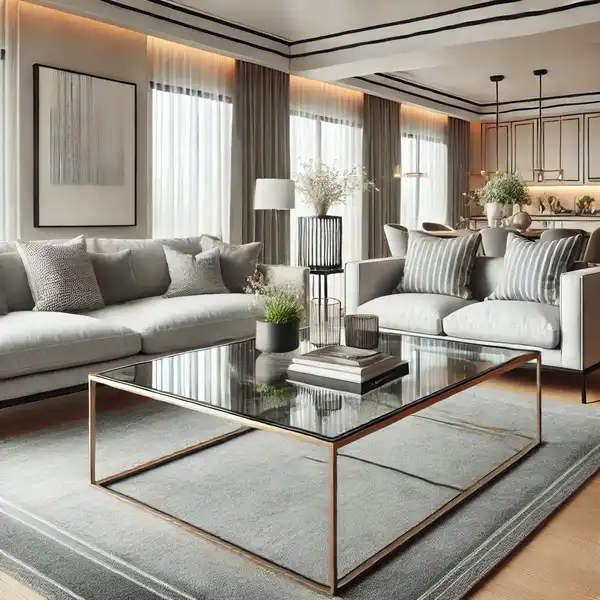
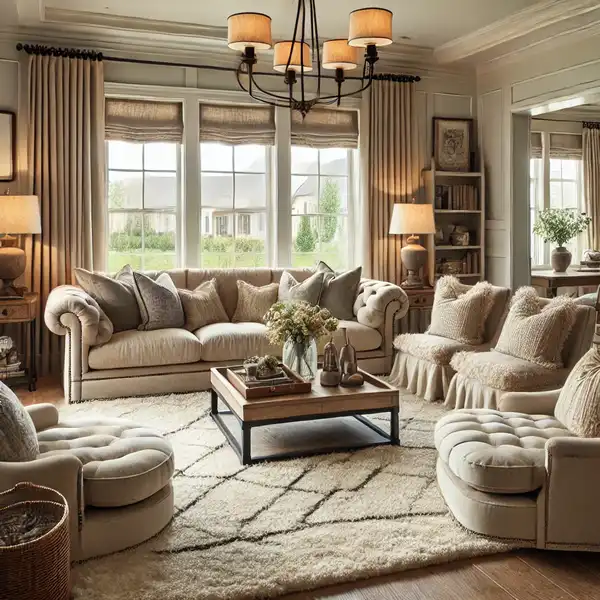
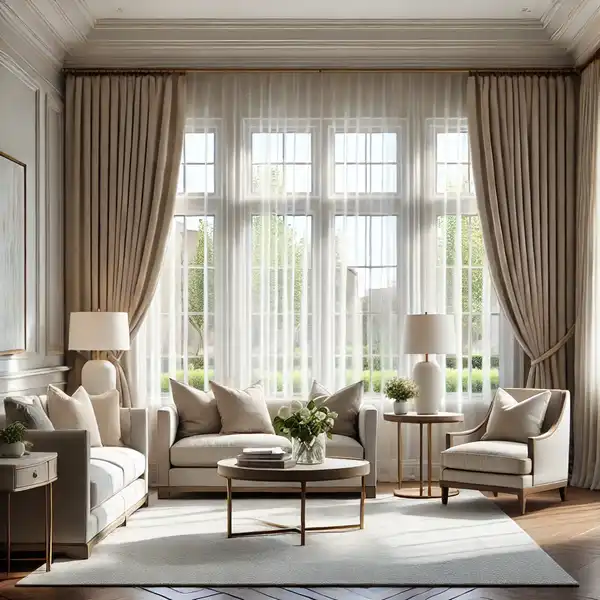
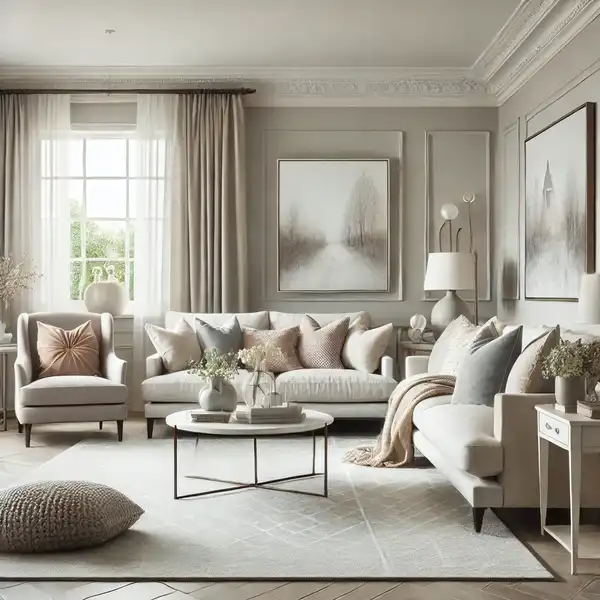
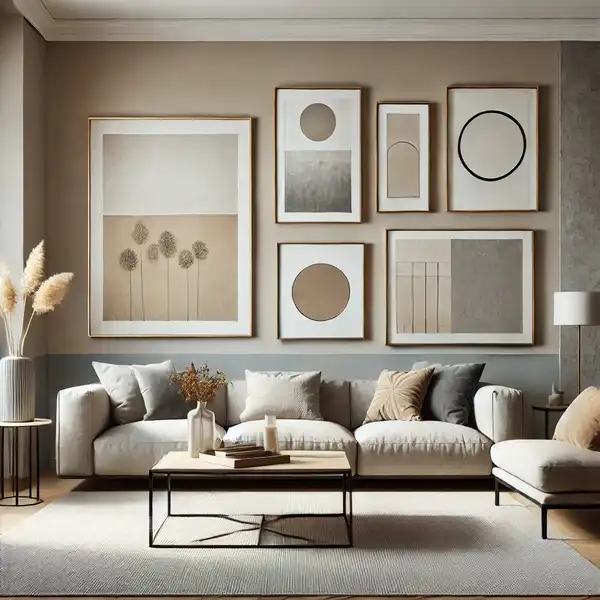
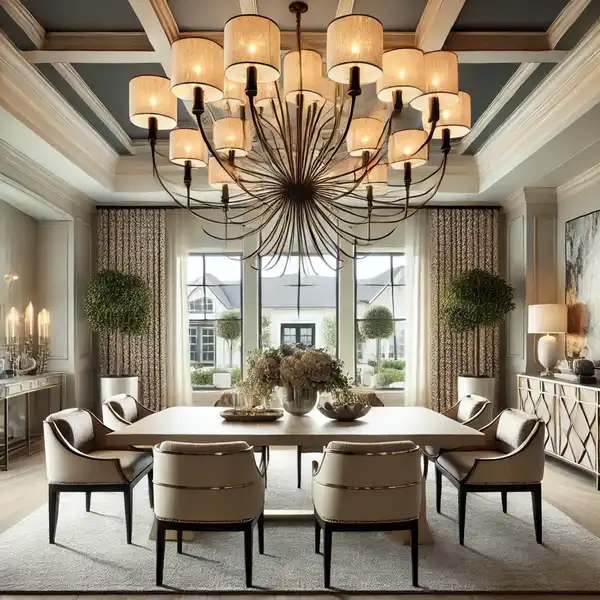
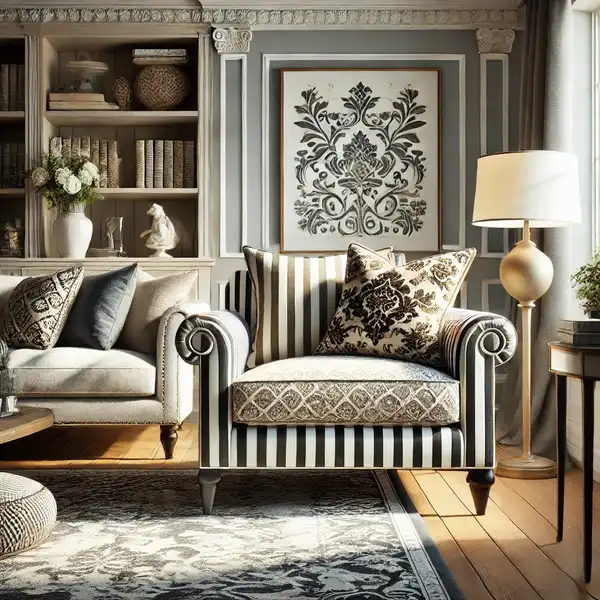
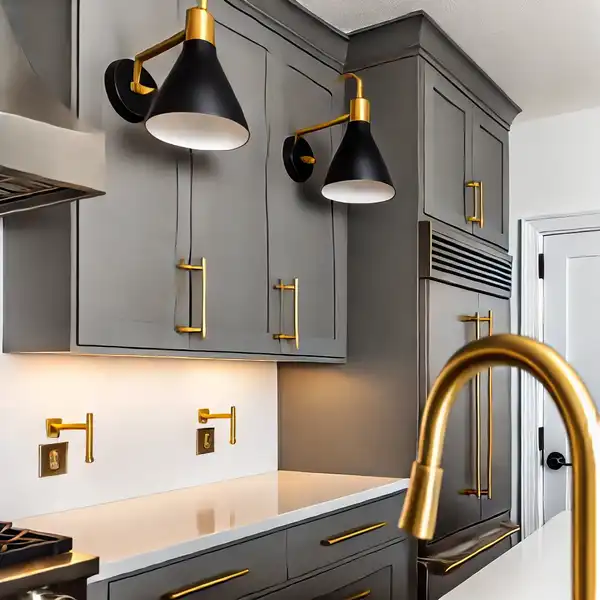
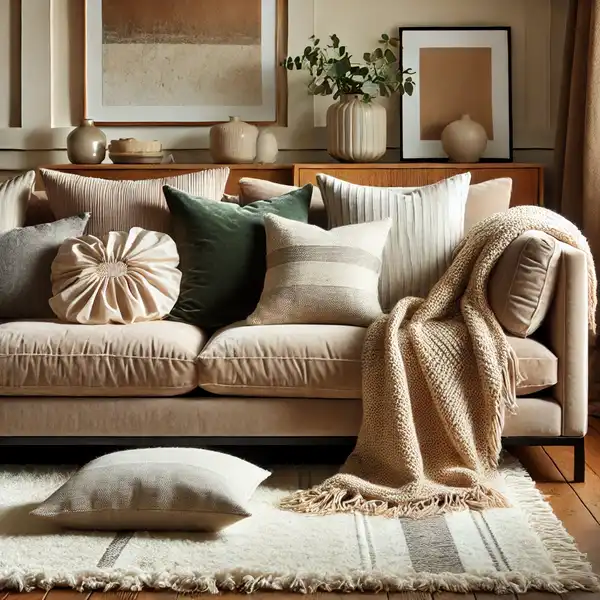
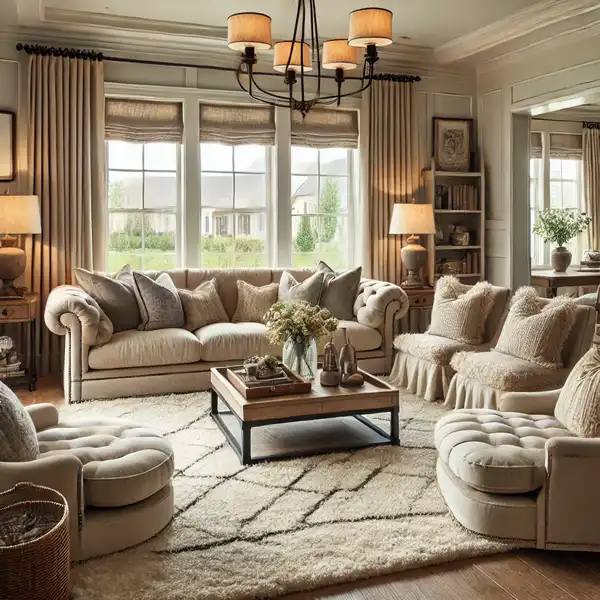
Transitional interior design balances modern and traditional elements, creating a stylish, comfortable space. Whether big or small, this design offers a timeless look that feels fresh and classic.